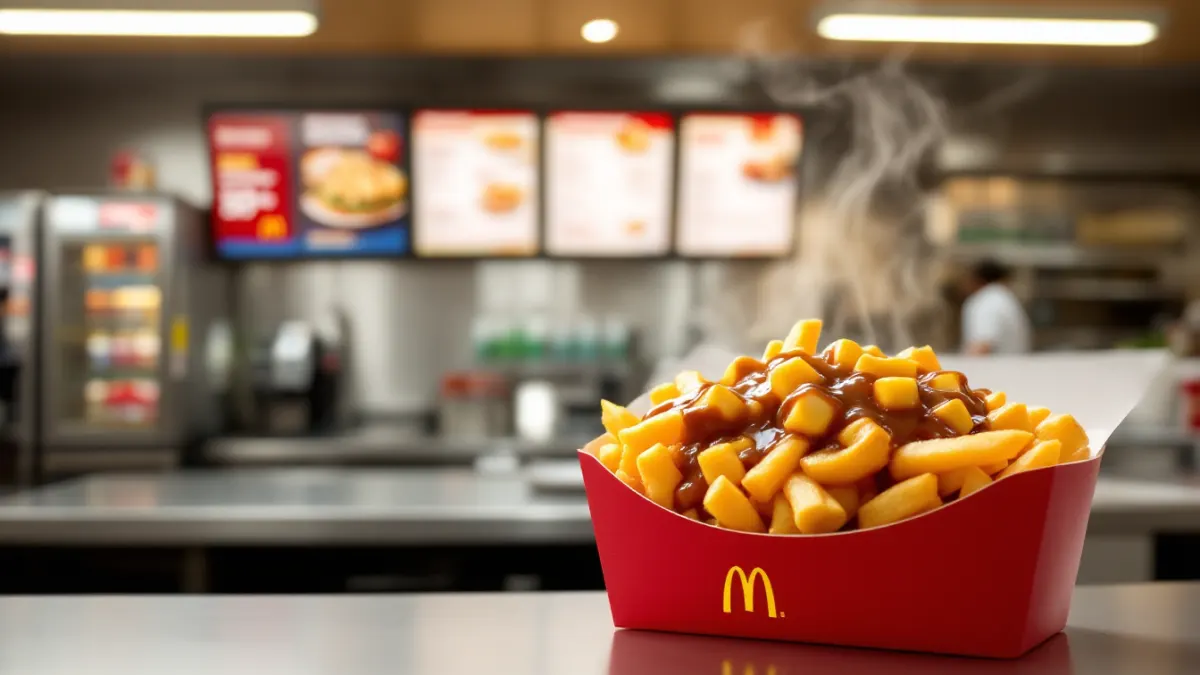Why McDonald’s Bringing Canada’s Poutine to US Redefines Menu Leverage

The US fast-food market spends billions on menu innovation yet often misses strategic systems leverage. McDonald’s is changing that by importing the Canadian fan-favorite side, poutine, to American locations this December.
This move is not just menu expansion—it's a leverage play that uses geographic product testing and standardized supply chain automation to reduce rollout friction.
By adopting a proven item from Canada's menu, McDonald’s taps into existing operational data and supplier networks, turning innovation from costly experimentation into scalable systems advantage.
Menu leverage comes not from novelty alone but from replicable systems that turn regional hits into nationwide assets.
Why This Isn’t Simple Product Importing
Conventional wisdom treats cross-border menu items as marketing stunts or fleeting trends. This underestimates the operational leverage embedded in McDonald’s decision.
Unlike competitors who launch new products with high supply chain variance and uncertain customer adoption, McDonald’s exploits the constraint of regional menu success. Automated process standardization and supplier readiness reduce friction in adaptation.
Instead of reinventing sourcing or training for US markets, the company repositions tested Canadian supply chains and kitchen workflows. This mirrors scalable moves covered in cost reduction through system design, making it easier to execute nationwide.
How Geographic Leverage Multiplies Returns
Canada’s poutine emerged from a smaller, controlled market that allowed McDonald’s to collect consumption and operational data at scale. This contrasts with US trials, which are typically costly and riskier due to diverse tastes and larger scale.
By letting Canada absorb first-order risks in ingredient sourcing and menu integration, the company lowers US entry costs from millions in development to incremental supply chain adjustment.
Competitors like Burger King or Wendy’s, who build products independently for the US market, face longer supply chain cycles and fragmented rollouts. This geographic-muscle approach compels a shift in how menu innovations are developed and commissioned.
Strategic Implications For Business Operators
The moved constraint is menu innovation cost and complexity—traditionally high because of vast geography and heterogeneous tastes. McDonald’s reduces this by duplicating proven regional systems, leveraging supplier contracts, and automating kitchen workflows.
Operators with footprint diversity should note that replicating success across borders accelerates growth without proportionate cost increases. Pairing this with resource optimization methodologies ensures investments compound.
Emerging markets and regions with modular supply chains can mimic this approach to reduce risk on new launches. Systematizing geographic menu leverage is a blueprint for scalable innovation.
“Menu leverage turns geographic hits into systemic advantage, enabling faster, cheaper scale.”
Related Tools & Resources
Operational efficiency and replicable systems are at the heart of McDonald’s strategic menu leverage. For businesses aiming to standardize workflows and automate processes for consistent cross-regional success, tools like Copla provide an ideal solution. Streamline your operations and turn best practices into scalable advantages with Copla’s SOP and process management platform. Learn more about Copla →
Full Transparency: Some links in this article are affiliate partnerships. If you find value in the tools we recommend and decide to try them, we may earn a commission at no extra cost to you. We only recommend tools that align with the strategic thinking we share here. Think of it as supporting independent business analysis while discovering leverage in your own operations.
Frequently Asked Questions
What is menu leverage in the fast-food industry?
Menu leverage refers to scaling successful regional menu items into broader markets using replicable systems, reducing rollout friction and costs. It turns regional hits like Canada’s poutine into nationwide assets by leveraging tested supply chains and operational data.
Why is importing menu items across borders challenging?
Importing menu items internationally involves operational complexities like adapting supply chains, sourcing ingredients, and training staff, which can increase costs and risk. Using proven geographic systems, as McDonald’s does with Canadian poutine, reduces these challenges by reusing established workflows and supplier networks.
How does geographic product testing reduce product rollout risks?
Testing menu items in a controlled, smaller market like Canada allows companies to collect consumption and operational data while absorbing first-order risks. This reduces US rollout costs from millions in development to marginal supply chain adjustments, enabling smoother nationwide launches.
What advantages does supply chain automation provide in menu innovation?
Supply chain automation standardizes processes and reduces variability, lowering friction in adapting new products. McDonald’s leverages automation to replicate proven sourcing and kitchen workflows, ensuring efficient, scalable menu expansion across regions.
How do regional menu successes influence nationwide business growth?
Regional successes provide operational insights and validated supplier contracts that can be duplicated to accelerate growth without proportional cost increases. Leveraging regional wins like Canada’s poutine helps businesses scale innovation faster and cheaper nationwide.
How can emerging markets apply systematized geographic menu leverage?
Emerging markets with modular supply chains can reduce launch risks by adopting tested menu items from other regions, automating workflows, and leveraging supplier contracts. This blueprint enables scalable innovation by turning geographic hits into systemic advantages.
Why do competitors face challenges launching new products independently?
Competitors building products independently for larger markets like the US often endure longer supply chain cycles and fragmented rollouts due to lack of prior regional data and supplier readiness. This contrasts with geographic leverage approaches that minimize these risks.
What role does menu innovation cost and complexity play in business strategy?
High costs and complex logistics traditionally constrain fast-food menu innovation across diverse geographies. Businesses like McDonald’s reduce these factors by duplicating proven regional systems, automating kitchen workflows, and leveraging supplier contracts to streamline launches.

